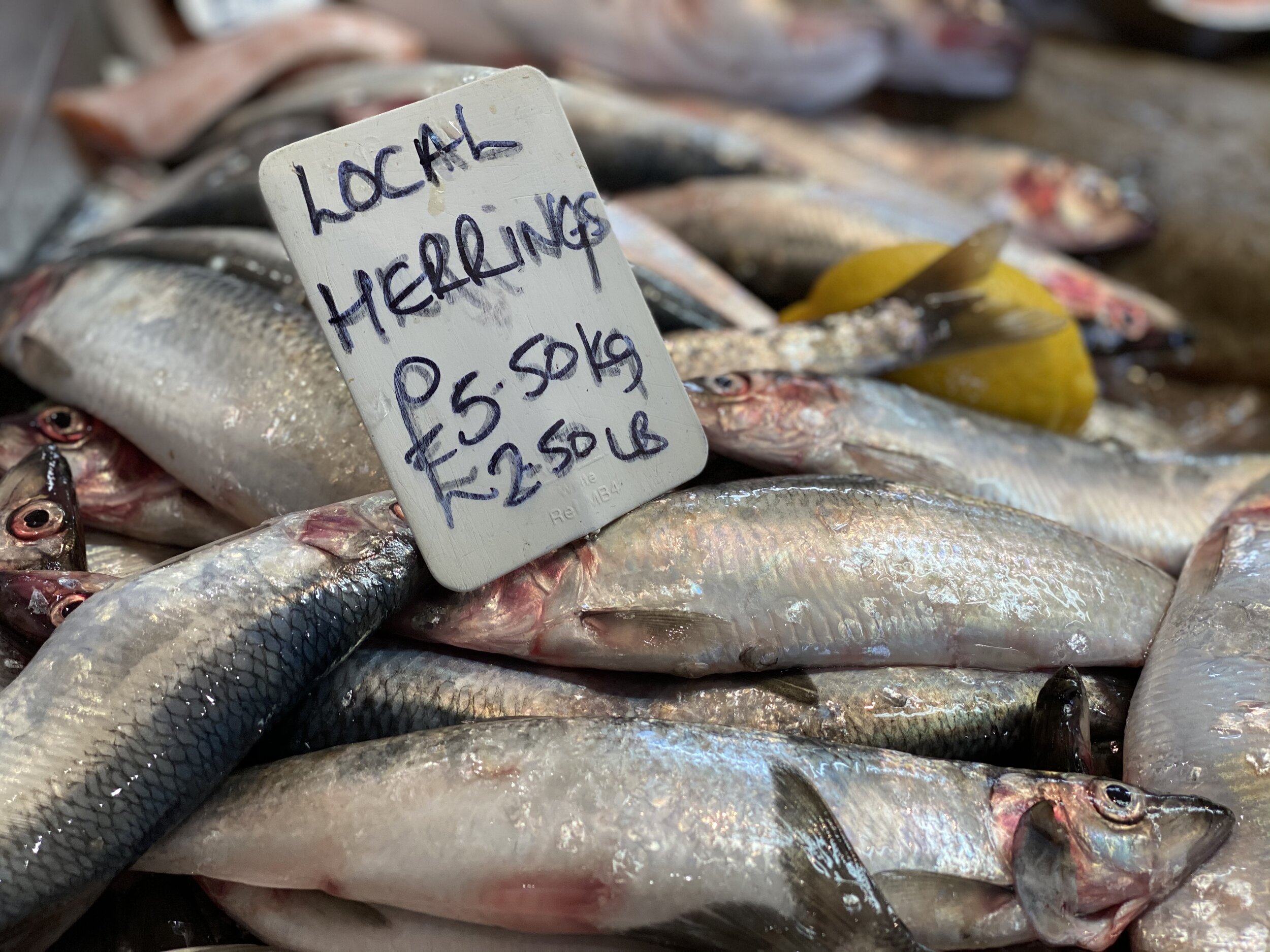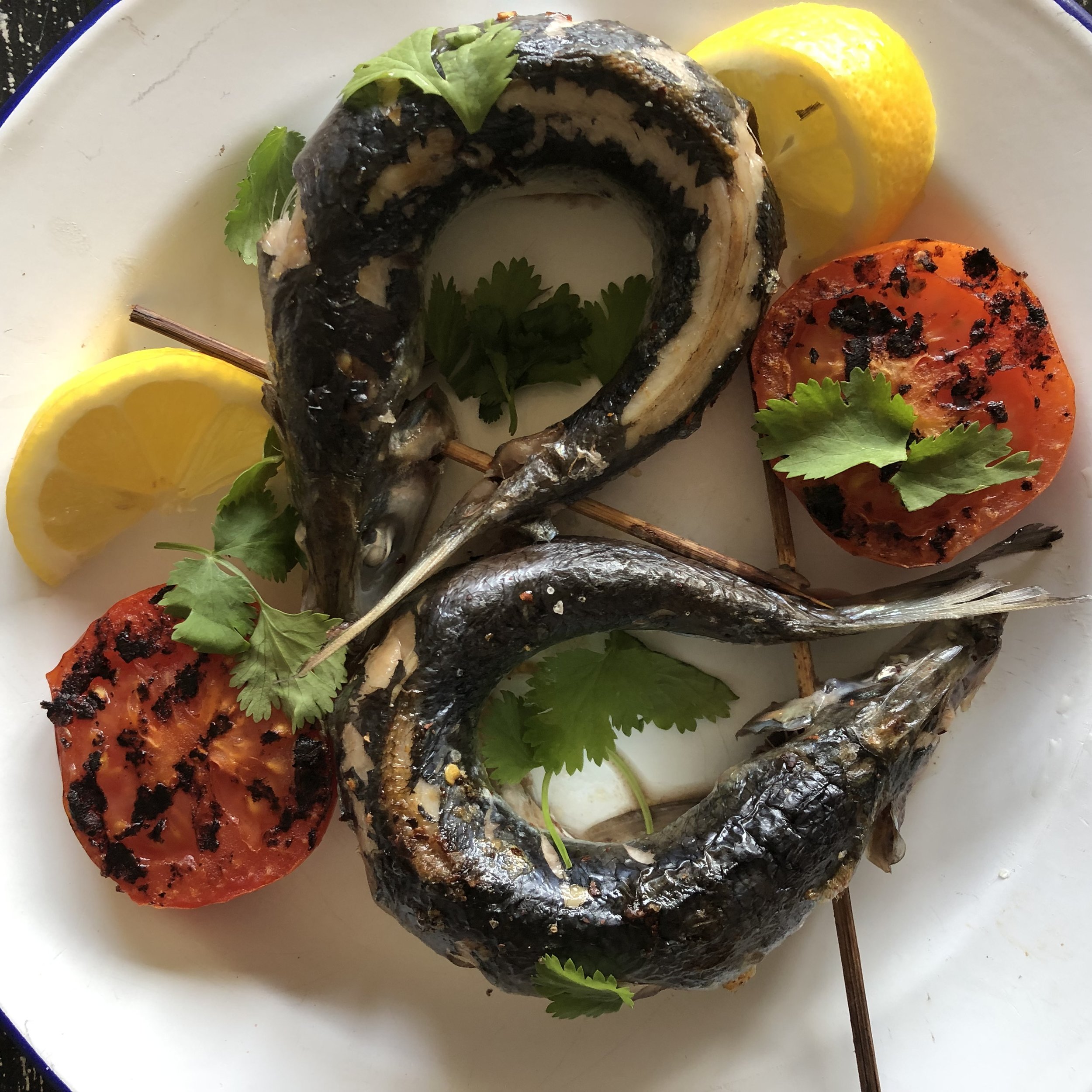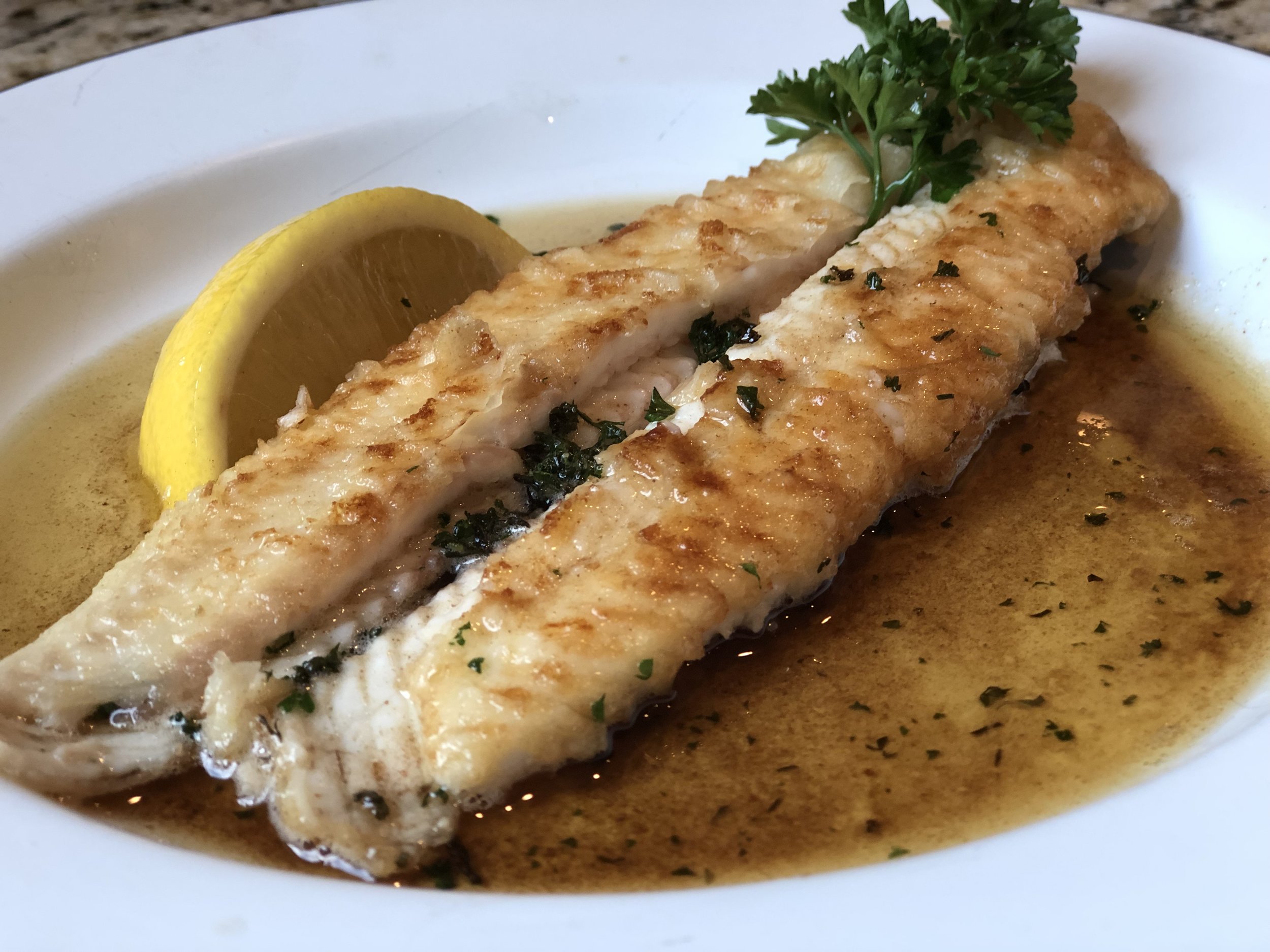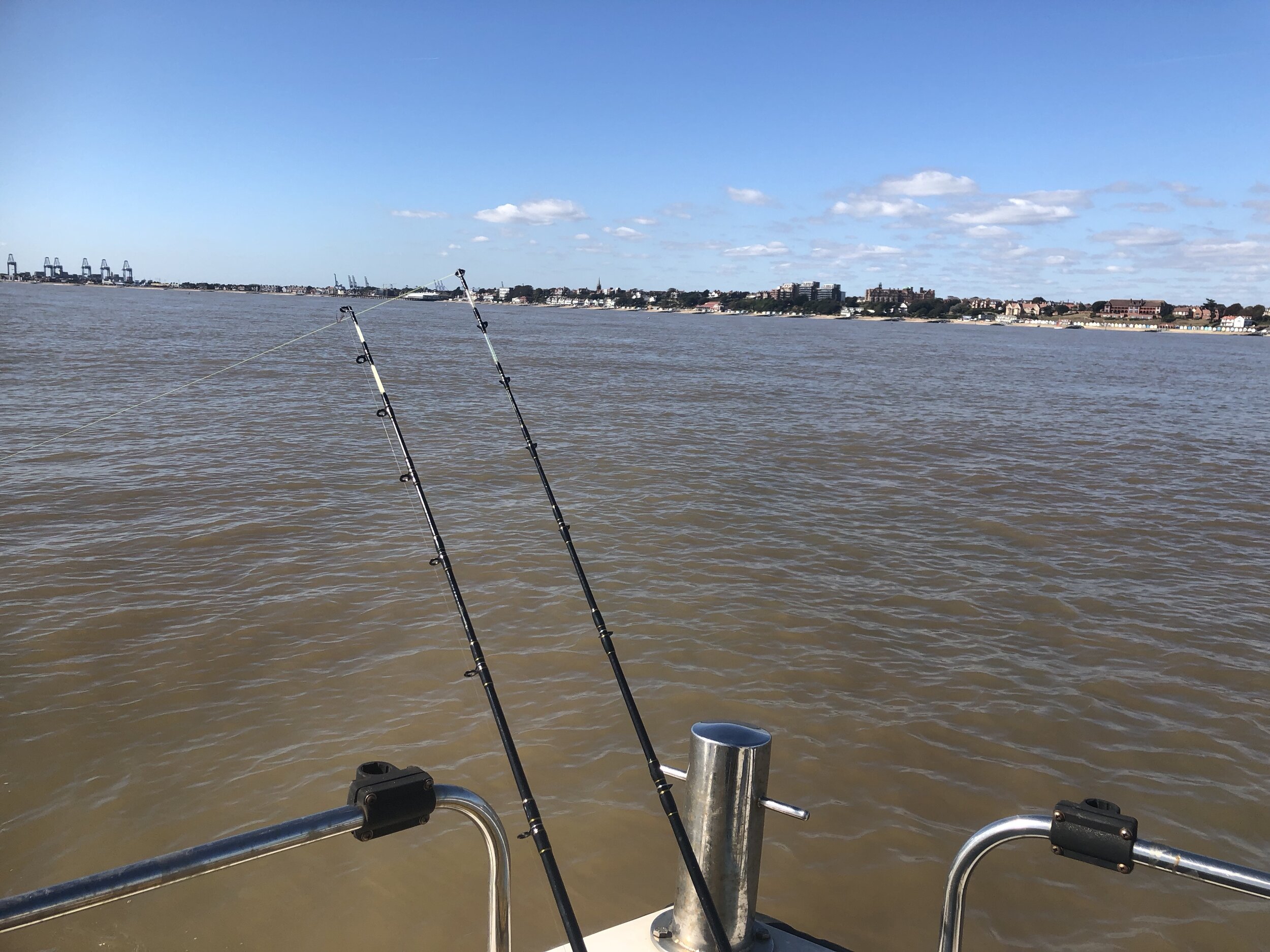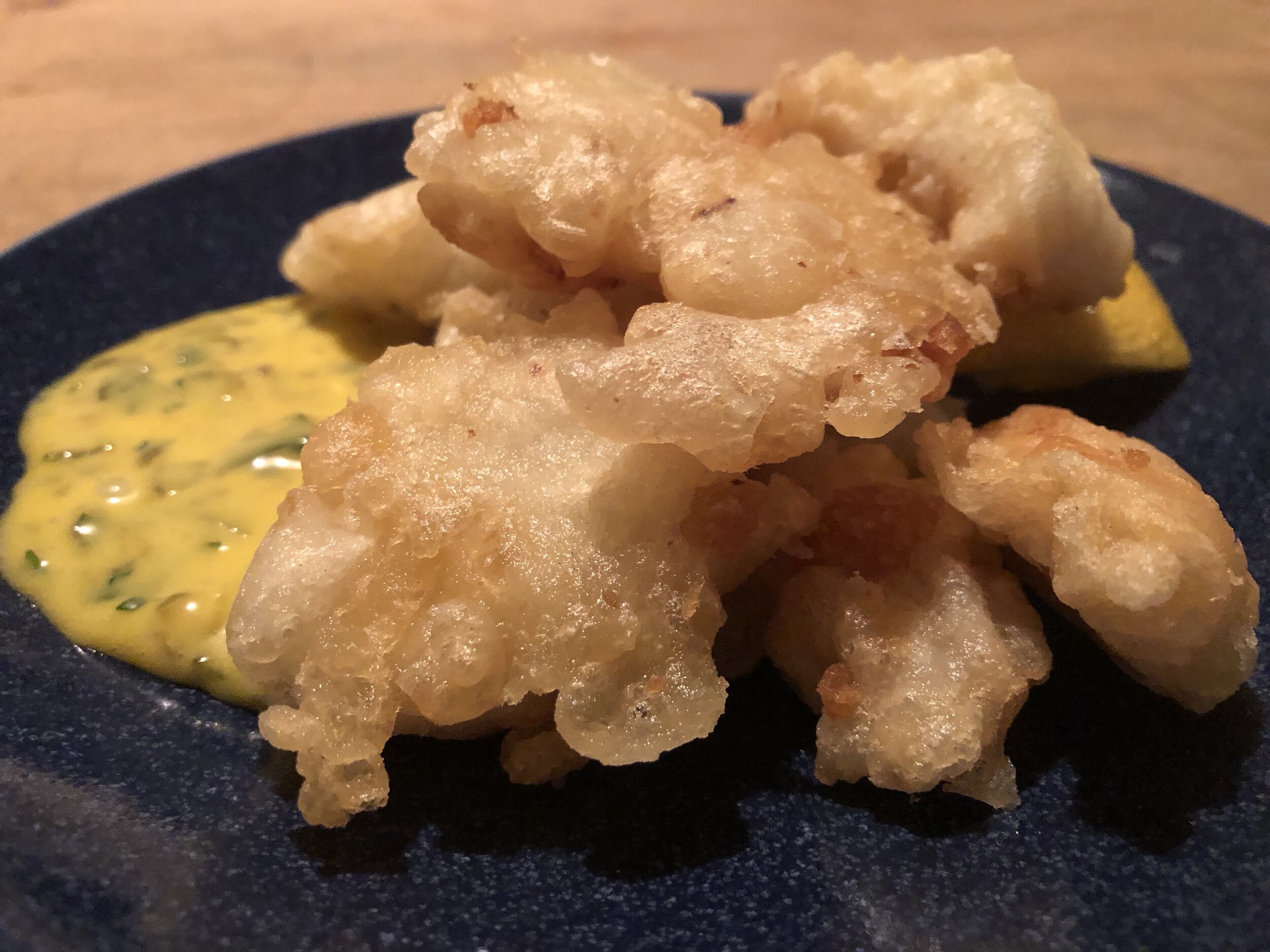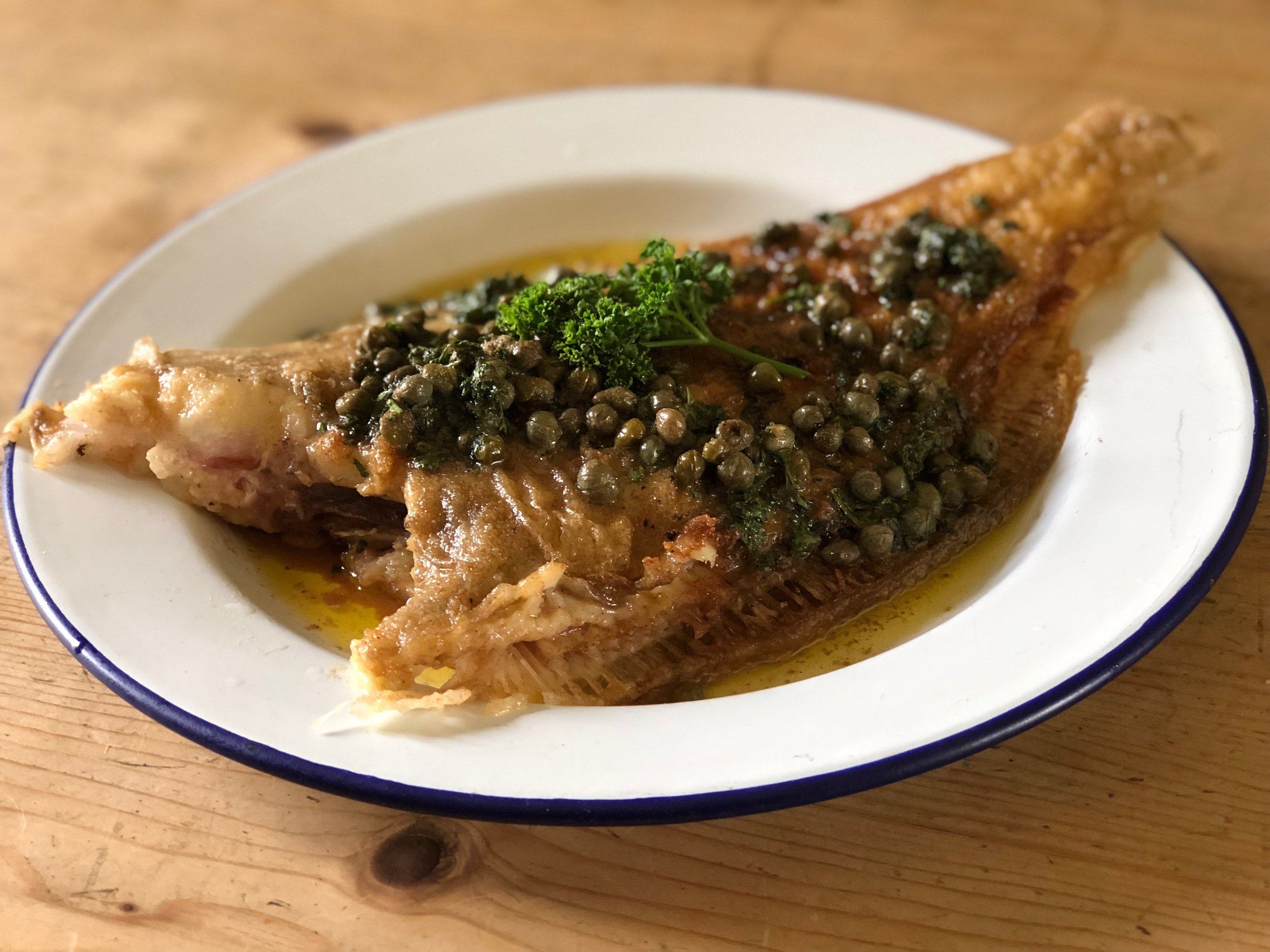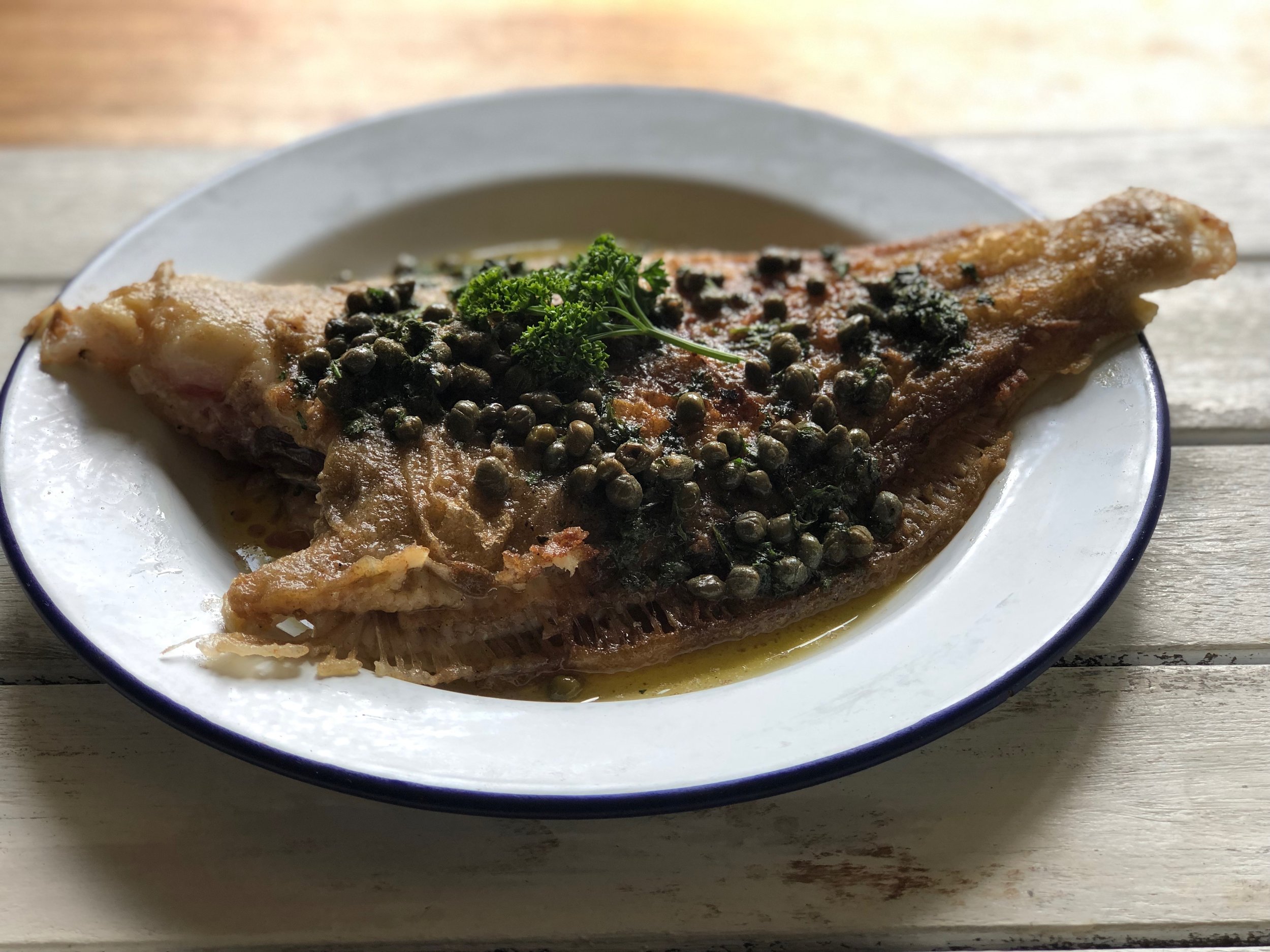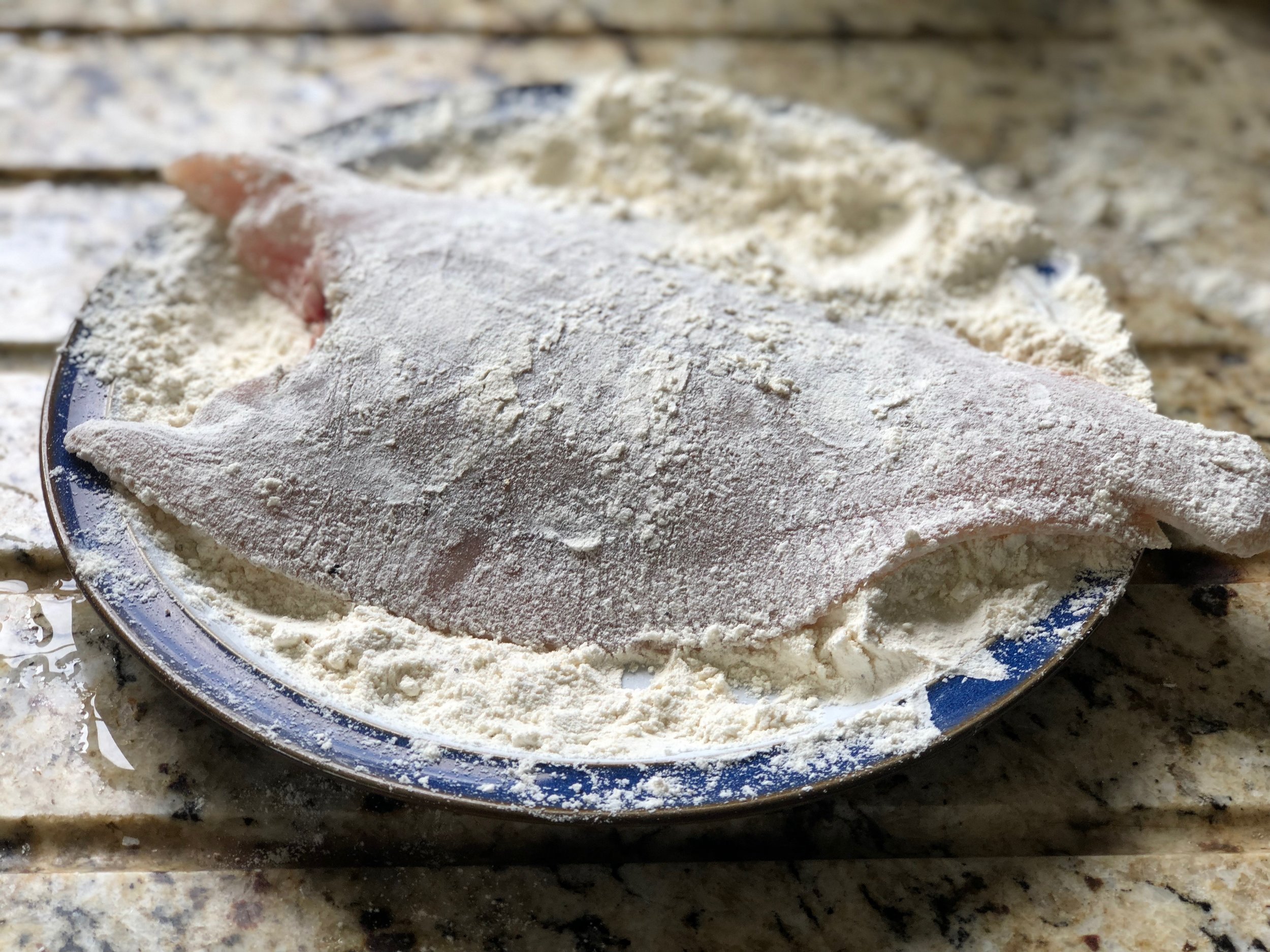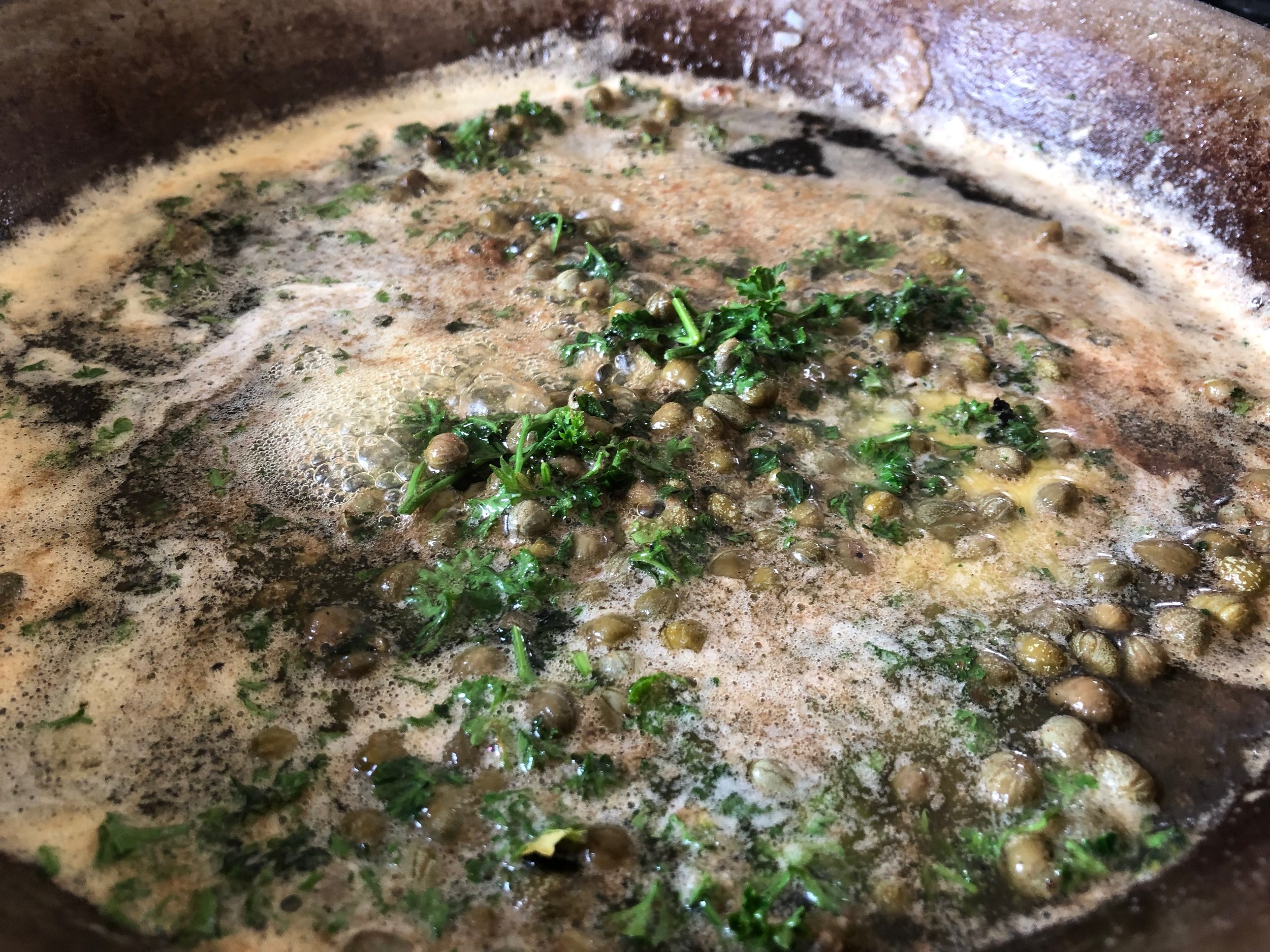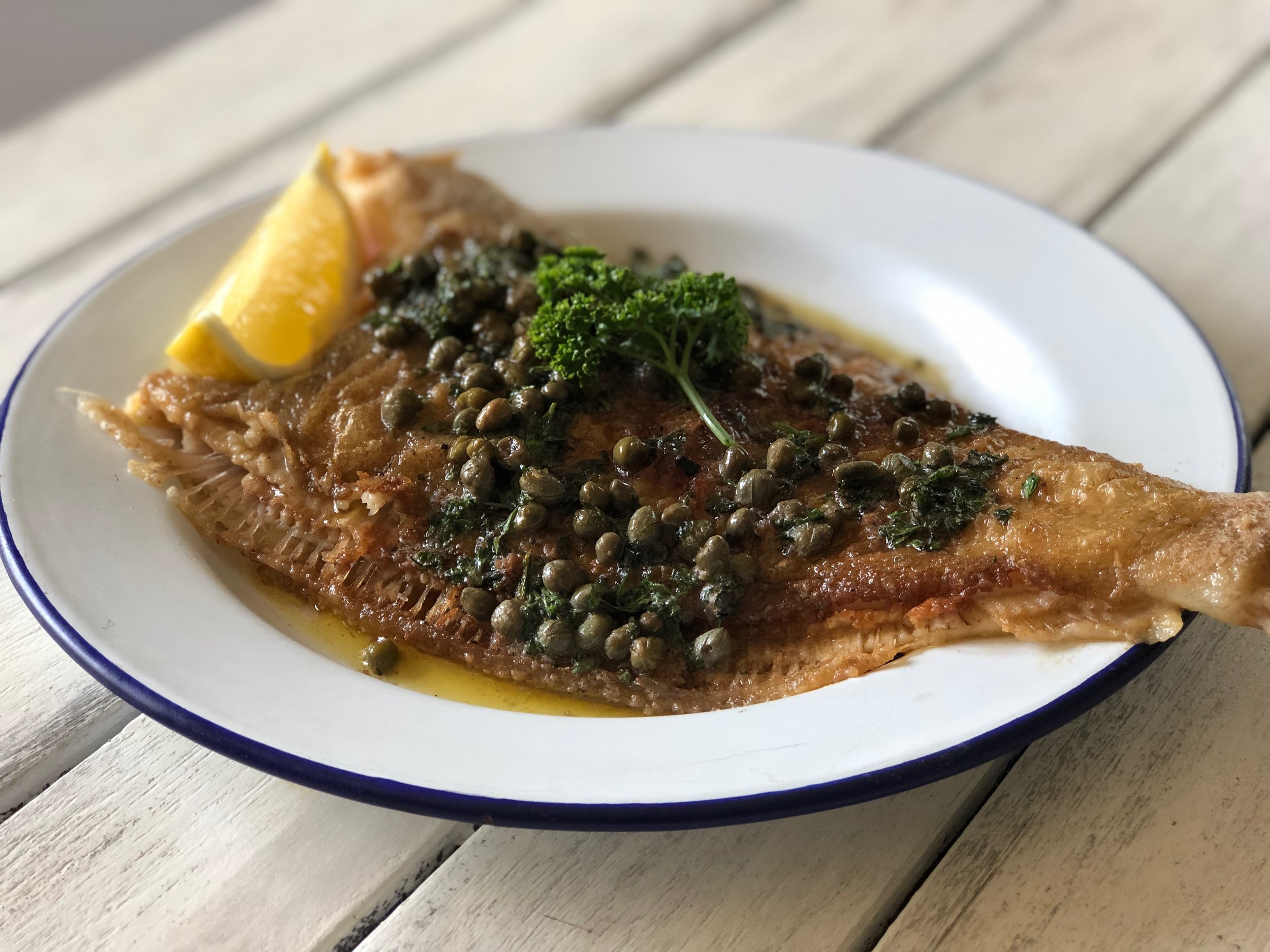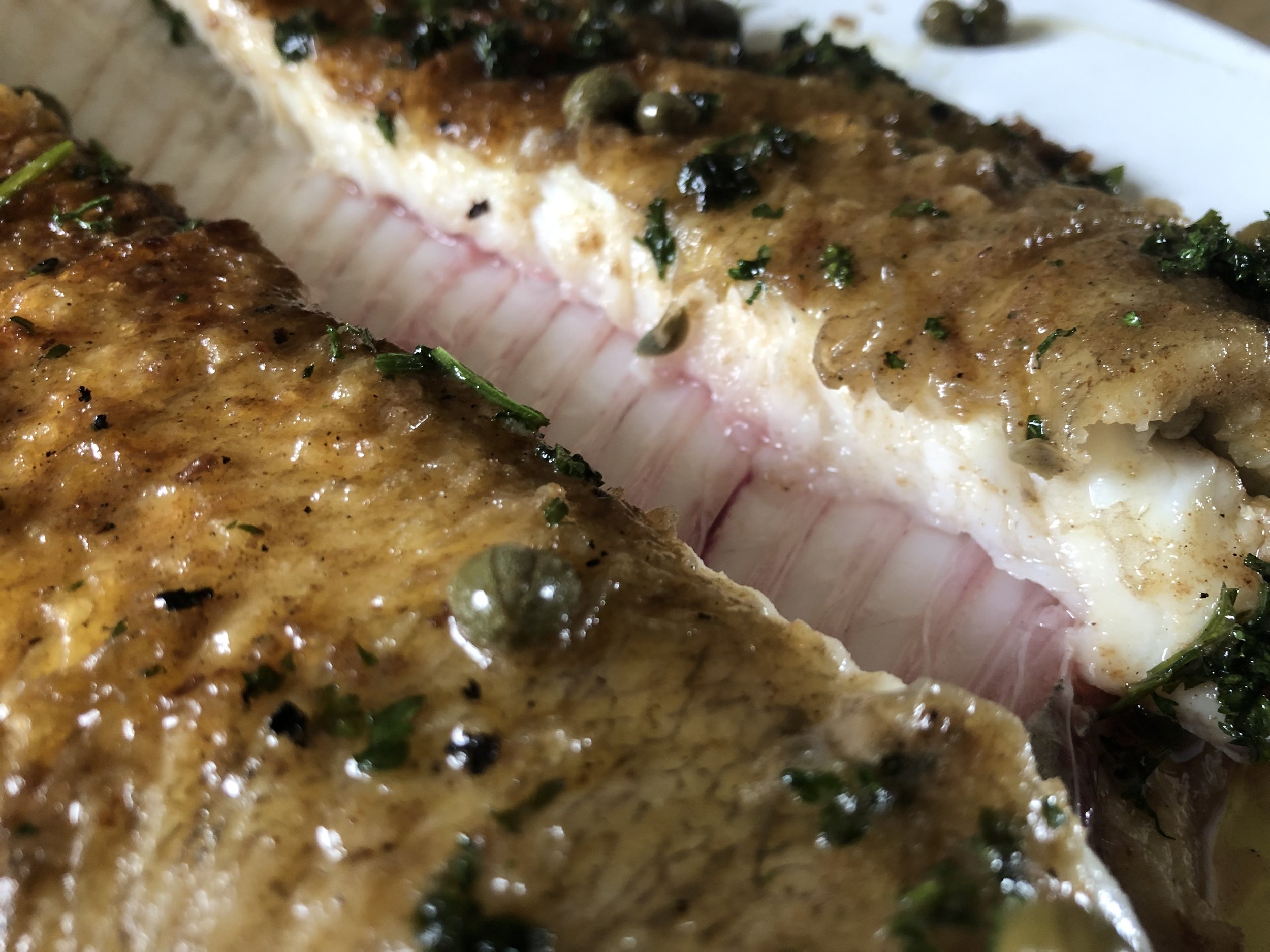The Hastings Herring Fair
As part of my role as a Seafish Ambassador, I make a point of visiting seafood festivals and food events around the UK where (a) there is great story to be told and (b) I’m going to reach a receptive and enthusiastic audience. Following my seasonal quest to discover the reasons why we eat so little herring any more, I was delighted to be asked by my great friend and fellow seafood aficionado, CJ Jackson, to jointly host a series of herring cookery demos, at the annual Hastings Herring Fair, in the aptly-titled ‘Classroom on the Coast.’
Now CJ has a phenomenal knowledge of seafood and is a brilliant cook and so with our combined passion for storytelling and showcasing seasonal seafood, it was always going to be a great event, but it exceeded even my expectations and we enjoyed 4 packed shows where we waxed lyrical about the ‘Silver Darlings’ and cooked and enthused over 8 different herring dishes over the course of the weekend.
Hastings itself boasts the UK’s largest beach-launched inshore fishing fleet and comprises an multitude of wooden and GRP vessels of all shapes and configurations. The fishermen here are some of the most engaged and passionate that I’ve met and fiercely defend their craft via the Hastings Fishermens’ Protection Society. Its economic importance stretches way further than the high water mark too, with a staggering worth to the local economy of £8m/year, before even putting to sea, such is its influence with the local tourist trade.
The fishery here is artisanal, low-impact, seasonal and definitely sustainable with a mixed fishery that provides stunning mix of quality species of both fish and shellfish throughout the year. Naturally we were there for the herring, recently descended on the fishery in their glistening multitude. So, with aprons on and knives at the ready we challenged visitors not to be utterly captivated and enticed by this delicious and nutritious little fish that men used to call the ‘King of the Sea’
Although the weather was a little damp, spirits certainly weren’t and with an array of fresh and smoked herring from Rockanore Fisheries, we set about putting the record straight with this wild superfood in terms of nutrition, flavour, affordability and seasonality. Smoked herring - kippers and bloaters (cold smoked) and buckling (hot smoked) are the most popular traditional forms, with the latter two being smoked with the roe and gut in. Hot smoking renders the fish ready to eat, but cold smoking requires cooking either grilling, jugging (poaching), baking or frying.
As for the fresh herring, ably scaled and gutted by our Commis, Serge, from Westgate College, I decided to prepare my old favourite, baking them with lemon and tomato in a very traditional style, with the fish pinned tail to head with a cocktail stick. I then poached some and made my potted herring recipe and then having been inspired by a Nathan Outlaw mackerel recipe, produced a raw herring tartare with spring onions, lemon and parsley, (which was probably my favourite) - the older I get the more I just love raw seafood…..
CJ, on the other hand, not content with the smoky offerings from nearby Rockanore, decide to demonstrate the art herself, turning out the most beautifully russet-coloured, buckling in just a few minutes, with her stove-top smoker. She then followed this with herrings in oatmeal with crispy bacon (an awesome combination) and fried with salsa verde, which always seems to go down well.
And then there were the roes….oh those roes! Lightly fried in a beurre noisette, both hard and soft and laid temptingly on slices of wholemeal toast, soaking up the seasoned buttery foam.
Our attentive audiences over the 4+ hours of displays, were thoughtful, engaged and enquiring and to be honest we couldn’t have asked for more. Certainly the dishes proved incredibly popular with something akin to a biblical plague descending on the tasting table after each session.
Interspersed with the cooking, I did my best to recount herring tales of yore and shed some light on the huge impact this little shoaling, silver fish has had on our coastal communities from Peterhead to Lowestoft and from Hastings to Clovelly. Storytelling is becoming a large part of what I do and it’s so incredibly gratifying when, after the demo, eager, questioning hands are raised and the ensuing compliments always bring a huge smile.
So a great success and bravo Hastings. I’d not been before, but I’ll certainly return and to the ‘classroom on the coast’, for another and this time, betentacled, seasonal offering…..
Silver Darlings - A Potted History of the Herring
A Short History Lesson!
The British herring fishery pre-dates the capture of many other species and in 1295 Edward I decreed that the Dutch should be allowed to fish from Yarmouth for herring ‘unmolested’ – (not much change there then!!) and of course competition ensued and struggles for the control of the herring fisheries were inevitable, giving rise ultimately to the emergence of the Royal Navy as protector of the shoals.
By the mid 17th century, the herring industry was booming and in 1650 the Navigation Act demanded that only British-caught fresh herrings were to be imported to our shores and by 1666 all trade in foreign herring, salted, dried or bloated was prohibited too.
Fishing for herrings was actively encouraged by parliament through the 1800’s and by the early 1900’s a vast industry was encompassing the Isles from Shetland to Cornwall, the Firth of Forth being noted for its abundance. An army of fisher-girls descended on ports and towns to clean and salt the fish down into barrels, from the Orkneys to Lowestoft, following the shoals throughout the seasons, as they migrated South toward the Channel.
Just before the First World War did the fishery peak, with a estimated 1500 herring ‘drifters’ crewed by 15,000 fishermen, landing 12,000,000 cwt of catch. The ensuing turmoil of war then depleted those landings by over half, fishing communities subsequently came under much economic pressure and in 1935 The Herring Industry Board was set up to monitor and manage the markets.
Following the Second World War the demand for protein increased, the fleets reinvested and improvements in fishing techniques and technology increased catches further. By the 1950’s overfishing of herring was a serious problem and landings fell dramatically and steadily right up to 1977, when the lowest catch for a century was recorded, with a spawning biomass (volume of adult herring) of only 150,000 tons and a 4-year ban on their harvesting was the inevitable result.
Of course with the stocks under pressure and ban enforced, a whole generation suddenly missed out on eating this wonderful fish and its popularity waned further. With dietary concerns never more important than today and rising obesity levels driving the health and superfood trends, this consistently overlooked resource could go a long way to redressing the balance in a thoroughly delicious and digestible form.
So where to find yourself some fresh herring? It’s a tricky one, as fishmongers have likewise responded to demand and they’re not a common sight on slabs anymore. But that’s where you need to start and ask - put in a request and see if they can source them for you, then get them to gut, scale and even fillet for you, so your first experience is a good one. Try frying the fillets lightly in seasoned flour and butter or grilling or griddling, brushed with a little light oil. Use the roes, (eggs) hard for making taramasalata or the soft male ‘milts’ fried in butter on some fresh toast.
If you can’t get fresh, then try them smoked as kippers or bloaters or pickled, as rollmops, which are so easy to eat because the tiny bones are broken down to nothing in the cure and make a wonderful go-to snack. Whichever way you choose though, be open-minded and remember that what you’re eating is wild, first class protein in its truest form.
Enjoy!
Baked New Season Herring with Lemon and Tomatoes
If there’s one fish which symbolises the downfall of the British consumer’s seafood eating culture, it’s the herring. Most definitely. An affordable protein staple for centuries, whole communities were founded on its capture, processing and sale. The very coastline and infrastructure that we enjoy today has in places been heavily influenced by this ‘King of the Sea’ from the Shetlands to Lands End. Indeed, so abundant were the glistening, dense shoals that migrated on their seasonal journey southwards to spawn, that a colossal industry was born and the rights to the landings protected fiercely.
The British herring industry reached its nadir in the early 1900’s with the Herring Industry Board regulation production and volume across the UK (https://eastcoastavocet.com/2018/03/31/the-fish-that-made-history) with over 12000 fishermen actively engaged in its harvest. Legions of Scottish fisher girls would follow the fleets as they steamed after the ever-moving fish; gutting, cleaning and packing.
The herring was an institution. Whether smoked, baked, pickled, salted or dried, the nutrition afforded by this iconic species, allowed everyday folk to eat wildly and well. Over time however, technology improved, efficiency doubled and by the end of the Second World War catches were going into decline. Overfishing eventually took its toll and by the late 1970’s a total ban on landing herring was introduced in the North Sea to allow stocks to recover. However, a whole generation would miss out on the opportunity to enjoy herring, as silently they disappeared from fishmongers’ slabs across the UK.
So to celebrate this incredible nutritious ‘superfish’, here’s a recipe to tempt your taste buds, using a gem of a cook book that was bought for me and that describes just how important this fish was to the national diet back in the pre-war 1930’s.
I was given this book, (well, more of a pamphlet) - The New Herring Book, published in 1938, which is full of ‘scores of nutritious herring recipes.’ Here’s just one, which really brings out the flavour and uses the whole fish in a lovely hour of easy to prepare, seafood theatre.
Baked Herring with Lemon and Tomatoes
Serves 2
Ingredients
4 whole new season herrings, (gutted and cleaned)
2 lemons, cut into wedges
4 large tomatoes (halved)
2 tsps butter
Sea salt
Black pepper
4 cocktail sticks
Method
Take the herrings and if necessary, clean further by washing in cold water and removing any remaining scales with a scaler or the back of a kitchen knife.
Score the flanks of the herring each side and spread a little butter in the body cavities. Squeeze a little lemon over the fish and season well with salt and pepper. Skewer the heads and tails of the herring together using the cocktail sticks and place in a foil lined baking dish with enough foil to create a parcel.
Tip
If using whole fresh herrings that you need to gut, keep the roes back, then dry them and add a squeeze of lemon juice and little ground nutmeg. Replace in the body cavity to bake - delicious!
Now season the tomatoes and place around the herring with the remainder of the lemon wedges. Cover with the sides of the foil to create the parcel and bake under a moderate heat - 180C Gas 4 for 15 mins.
Take out the herrings and open up the parcel and bake for another five minutes.
Remove from the oven and serve immediately with the tomatoes, lemons and some wholemeal or granary bread.
A very fine dish indeed and so incredibly healthy for mind body and soul……
Matt Price's Hake, Bacon and Potato Bake
Matt Price is a fisherman. I have the utmost respect for fishermen, full stop. But Matt is also a bit of a legend insomuch that he’s also a top cook, and when I say ‘top cook,’ the guy can turn out incredible seafood dishes from a galley that’s no more 2m x 2m (literally). Add to that a pitching, rolling swell and limited access to normal kitchen requisites, the food that Pricey turns out for his shipmates, day after day and after his duties on deck as First Mate, is awesome and really does it for me. .
I first met Matt when I went aboard the ‘Ajax’ for a hake netting trip in 2017, to write an article for Country Life magazine. It was only a short trip - 5 days fishing the Western Approaches, 40 miles North of the Scillies in the Celtic Sea. However, a defining moment for me, as I got to witness and be involved in the running of a commercial fishing vessel following the story of the Marine Stewardship Council (MSC) accredited hake from ‘net to plate’.
Aboard the Ajax, I was treated to some of the freshest fish that I’ve been privileged to consume - whole megrim on the bone for breakfast, monkfish Provençal and of course hake served a variety ways straight from the galley. For a seafood obsessive like myself, probably the nirvana that I’ve been searching for!
So with more than a nod to Pricey and his outstanding gift for feeding people miles out to sea, here’s his Hake, Bacon and Potato Bake - or rather my version of it, where I’ve included a few leeks and guessed quite a lot, so he won’t sue me for plagiarism ;-)
Hake Bacon Leek & Potato Bake
Serves 4
Ingredients
500g MSC Cornish Hake loin
300g waxy potatoes e.g Desiree (thick sliced)
4 rashers smoked streaky bacon (diced) (or pancetta)
1 large brown onion (finely chopped)
2 leeks (sliced)
250g butter
250ml full fat milk
1 litre of fish stock (preferably made from the hake frame/head)
1 tbsp plain flour
A little cornflour
Sea salt and freshly ground black pepper to season.
Smoked paprika for dusting.
Method
First slice the hake loin into bite size chunks and brown on a high heat. Remove skin (if still on) and set aside.
Fry the bacon/pancetta until crispy and drain. In the same pan add a little butter and season and sauté first the chopped onion and the leeks until soft, but not burnt.
Parboil the potatoes and drain.
Make a basic roux with the butter and milk and then thin to a sauce with the fish stock, until smooth but not runny. Add the Dijon mustard and chopped parsley, whisk in and add a little cornflour to thicken back if necessary.
Now incorporate the leeks, onion, bacon and hake with the sauce. Season again with black pepper. Spoon the mixture into a baking dish and arrange the sliced parboiled potatoes on top. Brush with melted butter and dust with black pepper and a little smoked paprika.
Bake the mixture at 180C for 15 -20 mins and finish off under a hot grill to colour the potato crust.
Serve with a dressed green salad and chunks of crusty French bread.
Magnifique……
Slip Sole Meunière
Dover soles are best described as a premium flatfish, ‘widely prized by chefs for its versatility, texture and ability to hold its flavour through a variety of sauces.’ Well, I don’t disagree with that - in all honesty it is, despite its restaurateur appeal, a perfectly easy fish to prepare, cook and eat if you follow a few basic steps. It’s also widely available, in season from the East coast all the way round through the Channel and beyond to the Celtic Sea, with a notable concentration in an area of sea above Trevose Head.
Because of its gravitas on a menu and the knowing looks that are exchanged when the whole fish arrives on a silver salver and is expertly filleted and portioned at the table, by a be-gloved waiter using fork, spoon and a deft hand, it’s sometimes overlooked for basic home cooking, just because of that perceived premium.
Soles are actually very accessible and in a very affordable form when bought as ‘slips’ or small soles, which are too insignificant to tempt most chefs, but when served simply and two or three at time, make an incredibly delicious and quick supper. Small they may be, but the flavour is huge, with an exquisite and delicious sweetness.
The Meunière part of this dish just means ‘dredged in seasoned flour’ a simple, but effective way of crisping and flavouring the outer skin of the fish whilst frying in butter. Of course adding fresh herbs like chopped parsley or chervil and chopped capers can also enhance the flavour of the resulting ‘beurre noisette’ very agreeably.
It’s worth noting that the Dover is not best eaten fresh from the water but allowed to pass the rigor stage before preparing. This makes skinning easier and firms the flesh, although it’s perfectly acceptable to cook skin-on.
Slip Sole Meuniere
Serves 1
Ingredients
1, 2 or 3 fresh slip soles, skinned, fins removed.
150g seasoned plain flour
250g salted butter
1 lemon cut into wedges.
Fresh curly parsley chopped and a couple of springs to garnish.
Method
You can get your fishmonger to do this for you when he skins the fish, but if presented with whole fish, then simply prep them by cutting off the lateral fins, tail and pectoral fins with a sharp pair of kitchen scissors. Remember to cut from the tail towards the head. You can also remove the head as well if you like, cutting round just behind the gills, but with slips it’s quite ok to leave on. Dry the fish with kitchen roll and dredge in the seasoned flour shaking off any excess.
Melt the butter in a heavy saucepan until it bubbles and starts to turn a nut brown colour. When slightly foaming, introduce the fish and cook equally on either side for approx 2 mins, or until the floured sides are golden and crispy.
Remove from the pan and transfer to a serving plate.
We now ‘unzip’ the sole by carefully teasing away the outer fin frills from the tail to the head. Then make an incision along the backbone of the fish with a knife and again gently push away the meat of the bone sideways, on both sides, until the full backbone is exposed. Now lift up the backbone from the tail and remove from the fish. You can now knit the two top fillets back together and the fish is ready for serving.
Add the chopped curly parsley to the warm beurre noisette and combine. Pour the mixture over the sole(s) and serve with the lemon wedges, buttered sourdough and the parsley garnish.
Fit for a king……
Whiting Gin Tempura with Homemade Tartare Sauce.
Early autumn on the Suffolk Coast is always heralded by the arrival of an extremely ubiquitous but very undervalued white fish - the whiting (Merlangius melangus) which are present year round inshore, but traditionally arrive in greater numbers throughout September and October. They always used to be the prelude to the inshore winter cod fishery here, but for various reasons that I won’t expound here, cod have rather dropped off the chart and we have seen any commercial number now for several years.
Whiting however yes and thank goodness, as they are so, so tasty, easy to prepare and have the lightest of textures if prepped and cooked correctly. We caught and ate a lot of them when I was growing up and generally cooked them on the bone, which although incredibly flavoursome, used to frustrate me as the bones are fine and sharp and can be tiresome. However, on a successful foray aboard ‘Avocet’ recently to fish one of my childhood fishing marks out of Felixstowe Ferry, I thought I’d share a very easy and delicious way of enjoying whiting to its max, without the bones and the fuss.
Apart from providing a good bit of sport, these little fish are a delight to eat straight out of the water. Seafood doesn’t come much fresher and if you can get hold of them this fresh or from a day-boat fishmonger, then you’ll experience the same buzz that I do. If you can, get fresh whole fish and either fillet or get the fishmonger too. We used to catch so many back in the 70’s and 80’s that it was quite common for us to have a group of folk around the boat when we landed and would gladly give them away.
Whiting Gin-Tempura with homemade Tartare Sauce.
This recipe really is another ‘less-is more’ example of enjoying fresh fish at its best. A great lighter take on fish and chips or a tapas-style dish for sharing. You don’t need to skin the whiting either, as it cooks and eats so well with very few scales.
Serves 4
Ingredients
4-6 fresh day-boat whiting (cleaned and filleted)
Well-seasoned plain flour for dredging.
150g plain flour
150g cornflour
Splash of your favourite artisan gin
Sea salt and ground black pepper.
250ml sparkling mineral water
Lemon wedges to serve
For the tartare sauce
2 fresh free-range egg yolks
200 ml groundnut oil
1 tsp Dijon mustard
2 tsp chopped capers
2 tsp chopped cornichons
Handful chopped fresh parsley
Pinch sea salt
Couple of drops of Escheta (anchovy essence).
Method
Cut the fillets into small bite-sized strips and dredge with the seasoned flour and dust off the excess.
Prepare the tempura batter by combining the flours, adding a pinch of sea salt and whisking in the sparkling water to a loose consistency. Refrigerate
Heat the oil in a shallow pan to a moderate heat and test with a drop of the batter.
Meanwhile, make a mayonnaise for the tartare sauce, by whisking the egg yolks, salt and Dijon mustard together whilst adding a steady stream of the groundnut oil. Whisk until it peaks and then fold in the chopped capers, cornichons and parsley. Add a couple of drops of the Escheta and whisk again. Refrigerate.
Dip the fish pieces in the batter to cover liberally and place in the hot oil, frying for 2 mins on either side or until crispy and very light brown. Drain on kitchen roll and serve immediately with the tartare sauce and a squeeze of lemon.
Light, fresh seasonal fish at its very best using a very sustainable alternative to cod and haddock. Works well too with pollack.
Megrim on the bone with capers and parsley
Megrim or megrim sole or sometimes ‘whiff’ are what we call left-handed flatfish (the way their eyes are set on their head) and are found all around the UK, but tend to inhabit deeper water compared to the more inshore flatfish species like dab, Dover sole and flounder.
Typically exported - the French and Spanish adore them, they’ve never really come up on the radar for UK consumers, buy of course they should do. In season and in prime condition from Scottish, or in this case Cornish, waters megs in good nick, for me anyway, go head to head with any brill or lemon sole worth its salt.
These recipes are meant to demonstrate the innate simplicity of cooking fresh, seasonal seafood and really there’s no easier solution to cooking an amazing fish such as the meg, than on the bone with minimal fuss. Fish cookery should not be a daunting prospect and although many folk see it as being overly complicated and perhaps shy away from experimenting or even ordering off a menu and I do get that. However, a little knowledge goes a very long way and hopefully I’ll demonstrate here that less is undoubtedly more.
Megs can be found throughout the year, but in Cornwall and the South West mid-summer to autumn is probably the best time to try them. You’re more likely to buy them from an independent or coastal fishmonger, but they are there and just need to be made more of. Check the firmness of the flesh, the brightness of the eyes and the redness of the gills. The fish should smell of nothing other than the sea’s natural ozone. If you must, get your fishmonger to fillet, but maximum flavour will always come from a flatfish like this cooked on the bone.
Ingredients - serves 2
One whole fresh Cornish megrim (gutted) about 1kg
200g Cornish sea salt butter
50ml Cold pressed rapeseed oil
2 tbs capers
A good handful of fresh, chopped curly parsley
Plain flour for coating
Ground black pepper
Sea salt
Lemon to serve
Parsley sprig to garnish
Method
Firstly trim the fins and tail from the fish using kitchen scissors and always cut from the tail end to the head, against the lie of the fins. Next remove the head (not essential) by cutting around the bone behind the gills with a sharp knife.
Season the flour well with salt and pepper and coat the fish liberally all over, shaking off any excess.
Heat the oil and butter in a heavy frying pan and once melted and bubbling well, introduce the fish carefully head end down, holding the tail and cooking on a relatively high heat for 3 mins. Roll the butter mixture around the fish and ensure that the skin doesn’t catch if not using a non-stick pan.
Using a fish slice turn the megrim over and cook on the other side again for 3 mins until the skin is golden brown. Carefully lift the fish from the pan and place on a board, as it will continue to cook. Add a little more butter to the cooking liquor and the capers and chopped parsley. Stir and cook over a low-med heat for a couple of minutes to release the flavours and the butter takes on a nut brown appearance and nutty aroma.
Place the fish on a warm plate and spoon over the hot caper and parsley ‘beurre noisette’

